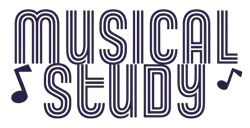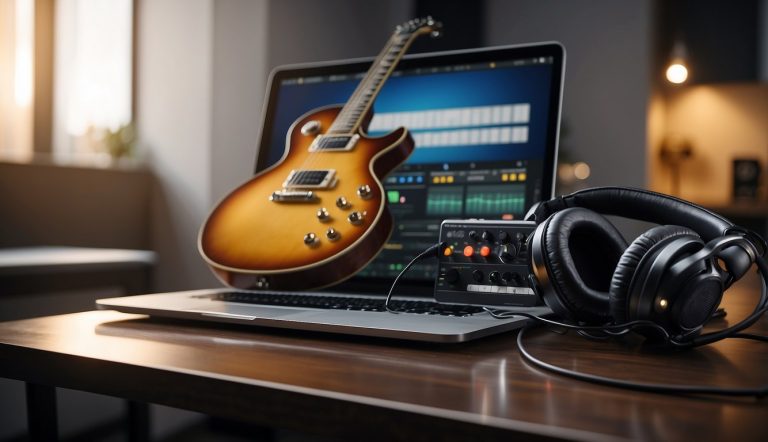What Are Modulation Effects? – A Beginner’s Guide
Modulation effects are a crucial aspect of sound and music production. Modulation is the process of manipulating a signal’s characteristics, such as amplitude, frequency, or phase, to create new effects.
These effects can be subtle or dramatic and are used in various genres of music to add depth, texture, and movement to the sound.

Understanding the fundamentals of modulation is essential to create unique and interesting sounds. Common modulation effects include tremolo, vibrato, chorus, and flanger, each with its distinct sound and character. Technical aspects of modulation effects, such as the rate and depth of modulation, can be adjusted to create different effects and add complexity to the sound.
Modulation effects have been used in music history for decades, and their popularity continues to grow. Frequently asked questions about modulation effects include how to use them effectively, which effects work best for different genres, and how to achieve specific sounds. By exploring the various modulation effects and their technical aspects, you can create unique and exciting sounds that enhance your music production.
Key Points
- Modulation effects manipulate a signal’s characteristics to create unique and interesting sounds.
- Common modulation effects include tremolo, vibrato, chorus, and flanger.
- Technical aspects of modulation effects, such as the rate and depth of modulation, can be adjusted to create different effects and add complexity to the sound.
Table of Contents
Fundamentals of Modulation
Understanding Modulation
Modulation is a process of modifying a signal in order to transmit information. In simple terms, it is a way of embedding a low-frequency signal (information signal) into a high-frequency signal (carrier signal) so that it can be transmitted over long distances. The process of modulation helps to improve the efficiency of signal transmission and reduce interference.
Types of Modulation
There are different types of modulation techniques used in communication systems. The two most common types of modulation are Amplitude Modulation (AM) and Frequency Modulation (FM).
Amplitude Modulation (AM)
Amplitude Modulation is a technique in which the amplitude of the carrier signal is varied in proportion to the amplitude of the information signal. In other words, the amplitude of the carrier signal is increased or decreased based on the amplitude of the information signal. This type of modulation is used in radio broadcasting.
Frequency Modulation (FM)
Frequency Modulation is a technique in which the frequency of the carrier signal is varied in proportion to the amplitude of the information signal. In other words, the frequency of the carrier signal is increased or decreased based on the amplitude of the information signal. This type of modulation is used in FM radio broadcasting.
Common Modulation Effects
Modulation effects are an essential part of any guitar player’s toolkit. They add depth, character, and texture to your sound, making it more interesting and engaging. In this section, I will discuss some of the most common modulation effects and how they work.
Chorus and Flanging
Chorus and flanging are two of the most popular modulation effects. They both create a swirling, shimmering sound that can add a lot of depth and dimension to your playing. The main difference between the two is that flanging is a more extreme version of chorus.
Chorus works by duplicating your signal and slightly delaying one of the copies. This creates a subtle, swirling effect that sounds like multiple guitars playing at once. Flanging, on the other hand, uses a more extreme delay time, which creates a more pronounced, jet-like sound.
Phaser and Vibrato
Phaser and vibrato are two other commonly used modulation effects. Phaser works by splitting your signal into two, then modulating the phase of one of the signals. This creates a sweeping, swirling sound that can add a lot of character to your playing. Vibrato, on the other hand, modulates the pitch of your signal, creating a warbling, wobbling effect.
Tremolo and Echo
Tremolo and echo are two more modulation effects that are commonly used in guitar playing. Tremolo works by modulating the volume of your signal, creating a pulsing, rhythmic effect. Echo, on the other hand, creates a repeating, delayed version of your signal, which can add a lot of depth and atmosphere to your playing.
Technical Aspects of Modulation Effects
Parameters and Controls
When it comes to modulation effects, there are several parameters and controls that can be adjusted to achieve the desired sound. These include depth, rate, mix, feedback, speed, LFO, waveform, electronics, delay time, feedback control, rate control, modulated delay, and low-frequency oscillator.
Depth refers to the amount of modulation applied to the signal, while rate determines the speed at which the modulation occurs. Mix controls the balance between the dry and wet signals, and feedback determines how much of the output signal is fed back into the input. Speed refers to the overall tempo of the modulation, while LFO (low-frequency oscillator) determines the shape of the waveform.
Waveform refers to the shape of the modulation waveform, which can be adjusted to create different effects. Electronics refer to the type of circuitry used to create the modulation effect, which can affect the overall sound quality.
Delay time refers to the time delay between the original signal and the modulated signal, and feedback control determines the amount of signal fed back into the input. Rate control adjusts the speed of the modulation, while modulated delay refers to the delay time being modulated by an LFO.
Low-frequency oscillator (LFO) is a key component in modulation effects, as it creates the rhythmic variation in the signal. By adjusting the LFO rate and waveform, the user can create a wide range of modulation effects.
Signal Processing
Modulation effects can be implemented using a variety of signal processing techniques. These include analog and digital signal processing, as well as various types of modulation algorithms.
Analog signal processing involves using physical circuits to create the modulation effect, while digital signal processing uses software algorithms to create the effect. Both methods have their own advantages and disadvantages, and the choice of method will depend on the desired sound and the available equipment.
Modulation algorithms can include various types of frequency modulation (FM), amplitude modulation (AM), phase modulation (PM), and ring modulation (RM). Each algorithm produces a different type of modulation effect, and the choice of algorithm will depend on the desired sound.
Modulation Effects in Music History

As a musician and music enthusiast, I have always been fascinated by the various modulation effects used in music production. Modulation effects are an essential part of music production, and they have played a significant role in shaping the sound of modern music. In this section, I will take you through the history of modulation effects in music, including iconic songs and artists, as well as the evolution of modulation hardware.
Iconic Songs and Artists
The Beatles are one of the most iconic bands in music history, and they were known for their innovative use of modulation effects. In their song “Tomorrow Never Knows,” John Lennon used a technique called Artificial Double Tracking, which he developed with engineer Ken Townsend. This technique involved recording a vocal track and then playing it back while Lennon sang another track on top of it. The result was a unique and otherworldly sound that helped to define the psychedelic rock era.
Another iconic artist known for his use of modulation effects was Jimi Hendrix. Hendrix, who was a master of the guitar, used a variety of effects to create his signature sound. One of his most famous songs, “Purple Haze,” features a prominent use of the MXR Phase 90 pedal, which creates a swirling, phasing effect that adds depth and dimension to the guitar sound.
Van Halen is another band that is known for their use of modulation effects. In their song “Eruption,” Eddie Van Halen used a technique called tapping, which involves using both hands to play the guitar strings. He also used a variety of effects, including the CE-1 Chorus, which creates a shimmering, chorus-like effect that adds a sense of space and atmosphere to the guitar sound.
Evolution of Modulation Hardware
The evolution of modulation hardware has played a significant role in shaping the sound of modern music. In the 1950s, Leo Fender introduced the first guitar amplifiers, which featured built-in tremolo effects. Tremolo is a modulation effect that creates a rhythmic pulsing effect by varying the volume of the guitar signal.
In the 1960s, the CE-1 Chorus was introduced, which was the first chorus pedal. The CE-1 Chorus creates a rich, swirling sound by adding a slight delay and pitch modulation to the guitar signal. This effect was used extensively in the 80s and 90s, particularly in the grunge and alternative rock genres.
In the 1970s, the MXR Phase 90 was introduced, which became a staple of the guitar effects pedal industry. The Phase 90 creates a phasing effect by shifting the phase of the guitar signal, resulting in a swirling, swirling sound that adds depth and dimension to the guitar sound.
In the 1980s, the digital effects revolution began, and modulation effects were among the first to be digitized. Digital modulation effects, such as flangers and phasers, offered more precise control over the effect parameters and allowed for more complex and intricate modulation effects.
Frequently Asked Questions
How do flanging and chorus effects alter the sound of a guitar?
Flanging and chorus effects are two distinct types of modulation effects that can be used to enhance the sound of a guitar. Flanging creates a swirling, jet-like sound by modulating a delayed signal with the original signal. Chorus, on the other hand, creates a thicker, richer sound by modulating a slightly delayed signal with the original signal. Both effects can add depth and dimension to a guitar’s sound.
Can vibrato and tremolo be combined in a dual modulation pedal?
Yes, many dual modulation pedals offer both vibrato and tremolo effects. Vibrato modulates the pitch of a guitar’s sound, while tremolo modulates the volume. Combining these effects can create unique, complex sounds that are perfect for experimental music.
What distinguishes phaser effects from other types of modulation?
Phaser effects use a series of phase-shifting filters to create a sweeping, swirling sound. This is different from flanging and chorus effects, which use delay and modulation to create their unique sounds. Phaser effects can be used to add depth and movement to a guitar’s sound.
Are there specific modulation effects used in psychological studies?
Yes, modulation effects are often used in psychological studies to alter the mood or emotional state of study participants. For example, researchers may use vibrato effects to create a calming, relaxing environment. They may also use phaser effects to create a sense of disorientation or confusion.
What should I look for in the best modulation pedal for my setup?
When choosing a modulation pedal, it’s important to consider the specific needs of your setup. Look for a pedal that offers a variety of modulation effects, as well as adjustable controls for depth and speed. It’s also important to choose a pedal that is compatible with your guitar and amplifier.
How does modulated delay differ from standard delay effects?
Modulated delay adds a subtle modulation effect to a guitar’s sound. This creates a richer, more complex delay effect. This is different from standard delay effects, which simply repeat the original signal at a set time interval.
Modulated delay can be used to add depth and texture to a guitar’s sound.



